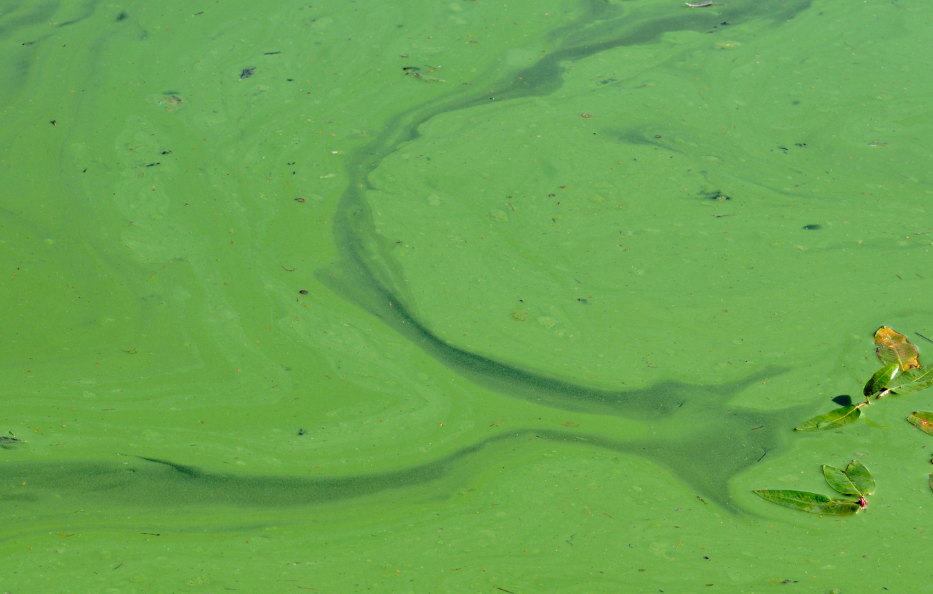It is important to manage blue-green algae during summer in Adelaide’s Torrens Lake. Read on to find out why – as well as exactly what it is.

Torrens Lake, stretching from Torrens Weir to the Frome Street Bridge in the Adelaide CBD, is a popular spot, especially over summer, with many festivals and events centred around this precinct.
In the late 1990s and early 2000s, this section of the River Torrens / Karrawirra Pari suffered from blue-green algae blooms – a natural occurrence, but something that would see the lake closed for public safety.
Since 2013, lake closures have been avoided thanks to a program that keeps blue-green algae at bay.
Read on to find out everything you need to know about blue-green algae and our program that keeps the lake open during Adelaide’s warm summers.
What is blue-green algae bloom and what causes it?
Blue-green algae are a naturally occurring microscopic bacteria that live in water, from a group known as cyanobacteria.
Similar to plants, they photosynthesize, which essentially means that they suck in carbon dioxide and convert it to oxygen, with the help of the sun. But when the sun goes down, they flip to sucking up oxygen and converting it to carbon dioxide at night.
Things get a little more complicated when the weather – and therefore water – warms up, As the warm, slow moving waters are rich in nutrients which the algae feeds on to survive. This leads to an increase in blue-green algae, which can deprive plants and animals from oxygen.
When the blue-green algae grow rapidly, they can discolour the water, form scums and produce an unpleasant odour – this is known as an ‘algal bloom’.
How harmful is blue-green algae?
Because blue-green algae takes away oxygen from plants and animals in the water, when there’s a lot of it around it’s bad news for anything else living in the same area. The blooms can also result in toxins that are harmful for people and wildlife.
Algal blooms can last for several weeks or even months, and the toxins can hang around in the water for up to 3 months.
When blue-green algae blooms have occurred in the past, the Torrens Lake has had to be closed for public safety.
Thankfully the Torrens Lake Blue-Green Algae Management Program has prevented algal blooms since 2013.
What does blue-green algae look like?
When there’s a blue-green algae bloom, it essentially looks like you’ve poured some kind of green paint or sludge on the top of the river.

Because they’re microscopic, blue-green algae can only be seen when there’s a group. Unless you can get one under a microscope! Sometimes an agal bloom is confused with the natural and completely safe occurrence of duckweed.
How do you get rid of blue-green algae in Torrens Lake?
Prevention is the best option, which is why our Torrens Lake Blue-Green Algae Management Program has been in play.
Through monitoring algae levels, catchment management and using flows of fresh water, we can successfully reduce the likelihood of a blue-green algal bloom occurring in the lake – and have done so since 2013.
If monitoring reveals that threshold levels of blue-green algae are being reached, water from upstream storage is used to freshen lake water quality and maintain algae at an acceptable level.
As well as managing blue-green algae, these flows can have a positive impact on aquatic plants and animals which rely on water in the system to thrive.
To help the water flow out to sea easily, we excavate a channel at Torrens Outlet in Henley Beach South which was completed in mid-December.
Will blue-green algae go away on its own?
Blue-green algae is naturally occurring in all types of water, but at a level which is not problematic for people or animals. While it is always there, it is only an issue if a bloom occurs.
If I see something green on the water, is it blue-green algae?
Not always.
Duckweed, a floating plant that causes no harm to people, animals or the river system, is sometimes mistaken by the public as an algal bloom.
Duckweed is a good source of food for animals, particularly ducks – who would have guessed it?!
It also removes nutrients from the water that would otherwise be available for algae to feed on.
Can I help reduce nutrients entering waterways?
There are 3 ways you can reduce the nutrients, which the algae feeds on, going into our waterways. They are:
- Pick up and dispose of pet poo, a common source of excess nutrients and bacteria.
- Allow natural vegetation to grow near the water’s edge.
- Use phosphorus-free fertilizers and detergents to limit nutrient-rich runoff.
Learn more about our management program
Find out about the Torrens Lake Blue-Green Algae Management Program and some frequently asked questions.
This blog was originally published in December 2023 and has been updated.